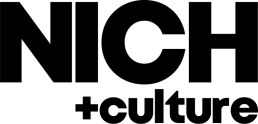
When assumptions fail - a look toward tackling your biggest upcoming workplace culture challenge.
Well, it’s mid-Summer, COVID cases are climbing higher and kids are not going back to school for the most part. The assumptions we all made early on in this crisis have failed to come to fruition – especially when it comes to work.
From the discussions we’re having with our clients and colleagues, most offices will continue to remain closed or at very limited capacity going into the Fall/Winter. What was exceedingly frustrating has turned to acceptance while a new cadence has developed for how we work.

Crisis control has progressed and evolved into a focus on the work at hand. Objectives and projects placed on hold are now back on the agenda. Everyone’s got new initiatives as well – a result of the COVID pivots we’ve all had to make. The point is, it’s not just about how “we get to Summer/Fall” anymore. Now it’s about, “let’s just get it done no matter where we are.”
With that in mind, we’ve also seen that there’s a perception that the surprising productivity and engagement levels we first experienced during the crisis have started to wane. The exciting newness of working from home and using Zoom may have faded for some. Perhaps those folks no longer feel the need to “prove” that “WFH” does indeed work, or they’re just suffering from burnout.

From an organizational health perspective, the impact of not seeing co-workers in person will inevitably affect company culture. Those common beliefs, behaviors and that all-important element of a productive culture – trust – flourish in an environment where stories are told at lunch, jokes are made in the hall and real talk happens on the way to our cars.
This is why we’ve been working with our clients on a progressive and deliberate project addressing a most critical issue:
How do we promote and sustain culture in the post-COVID era?
We’re going to share our approach addressing this question in a series of blog posts over the next few weeks. They will follow this order.
1. Insights
This is a critical component of our approach. It’s also the step that we most often get asked to skip. We’ve only done that once and it was a mistake.
Understanding the current beliefs and behaviors of your organization is the foundation upon which the entire strategy is built. What we learn through our qualitative approach to understanding the “Total Employee Experience” can be enlightening to the most tenured leader. When was the last time you were on-boarded? Exactly.
Now consider the impact of COVID on that entire experience. Just like how marketing strategies should never be set without consumer insights, the same goes for your workplace culture strategy. Employee experience insights are the foundation of the entire strategy.
We’ll talk about how we do this and why we’re good at it in the next blog.
2. Story
“What’s it like to work there?” That answer is your culture. There’s a story attached to it. It’s not the generic values that are in the employee handbook.
The Culture Story addresses ideas like: why we exist, why we work here and what really matters most. If these concepts aren’t deliberately captured and communicated, you are leaving one of the biggest factors of business success to chance.
We’ll show you how these Culture Stories are defined and what they look like for organizations with great culture.
3. Strategy
This is the plan – to develop the playbook to get that Culture Story into the hearts, souls and minds of every employee and make it stick. There’s a lot of moving parts involved in this one.
First, identifying and categorizing the common personas of your workforce. It may sound strange, but it’s really just about knowing your audience and what triggers inspiration in them.
Second, determining the tactical considerations of the total employee experience. This includes things like platforms for communication that are available – from email to the intranet and Zoom.
Lastly and most importantly, what are the capabilities of your managers when it comes to communicating and delivering a compelling message? Understanding this helps you frame what kind of tools and support they need. In our new remote working world, this is now the primary function of their job.
4. Content
So we have the Culture Story and the Strategy – now we need to create the content and tools that we’ll use to support it all. Remember, this is all about making it stick. A one-time announcement, rollout event or sizzle video is not going to make anything stick. (We do love a great purpose video though.)
When we say stick, we mean Pledge of Allegiance sticky (you just recited it in your mind – see!).
We’ll show you some different tools we’ve used – what works and what has failed. After all, nobody’s perfect and we learn from our mistakes.
5. Execution
We love to see all this work come to life. You know why? Because we truly believe in it. We believe in improving our clients’ cultures and employee experiences. Doing this means that people find meaning in their work and in turn find meaning in their lives. That’s our Purpose.
This comes down to three things: commitment, resources and hard work.
It also involves measuring, iterating and re-implementing again (and again). This part takes a lot of courage.
We’ll walk through how this goes down in the following blog posts.

We hope this is enough to spark your curiosity and some thought about how your organization is addressing some of these challenges.
In the meantime, we’d love to hear from you – your feedback is requested in perpetuity. Tell us how you’re coping, adapting and overcoming. One bright idea can help everyone.
A Roundup of All Things Cool, Interesting, and Tasty
(Fun Animal GIFs Included)

We spend a LOT of time learning and creating. We’re fortunate that we live a lifestyle that allows us to consume, evaluate, filter and process a ton of content. Some of this directly relates to the workplace, and some of it indirectly. We also know that this is a luxury many don’t have because we get asked all the time for recommendations for books, articles, podcasts, playlists, influencers to follow…you get it.
It takes a lot of time to sift through all the junk out there to find the real valuable content. So here’s a few things to check out:
Podcast
Leadership Next by Fortune Magazine – How Paul Polman Wants to Change the World
The former CEO of Unilever gives some transparent reflections on his time there and what it means to be committed to Purpose. It’s refreshing to see that it can be done at this scale.
This entire series is very insightful as Fortune has access to CEOs of the biggest companies in the world. The sessions appear to be un-rehearsed and authentic.

Playlist
NICH Nostalgic Jouissance – Yes, we make our own Spotify playlists for our office. Music matters to us. This is a fun throwback – feel free to share with friends and co-workers. Enjoy.
Book
Infinite Game – Simon Sinek’s latest. He does a great job articulating his view on Stakeholder Capitalism, and why organizations should change their long-term strategy. He’s got a great way of articulating an idea you probably agree with completely and gives you the data to back it up. You know, just in case you need some help persuading folks that are data driven (wink, wink).

Food
Del Bar – If you’re in the Atlanta area, we have a new favorite for you to check out. From the same folks at Rumi’s Kitchen – this Persian fare is outstanding. We’re not just saying this because they’re a few blocks from our office. It’s amazing. The take-out meals are perfect and they have al fresco dining on their patio.

